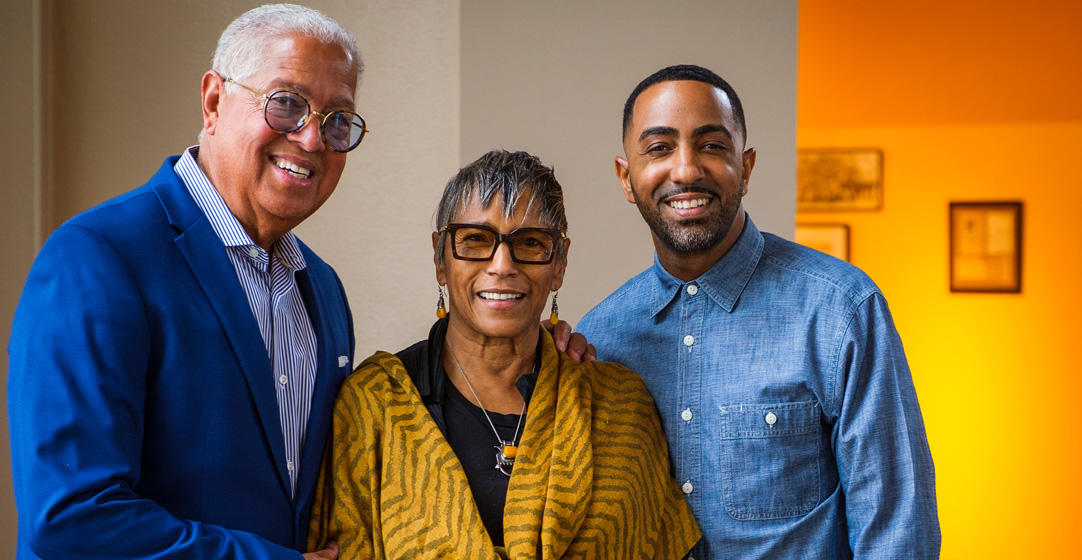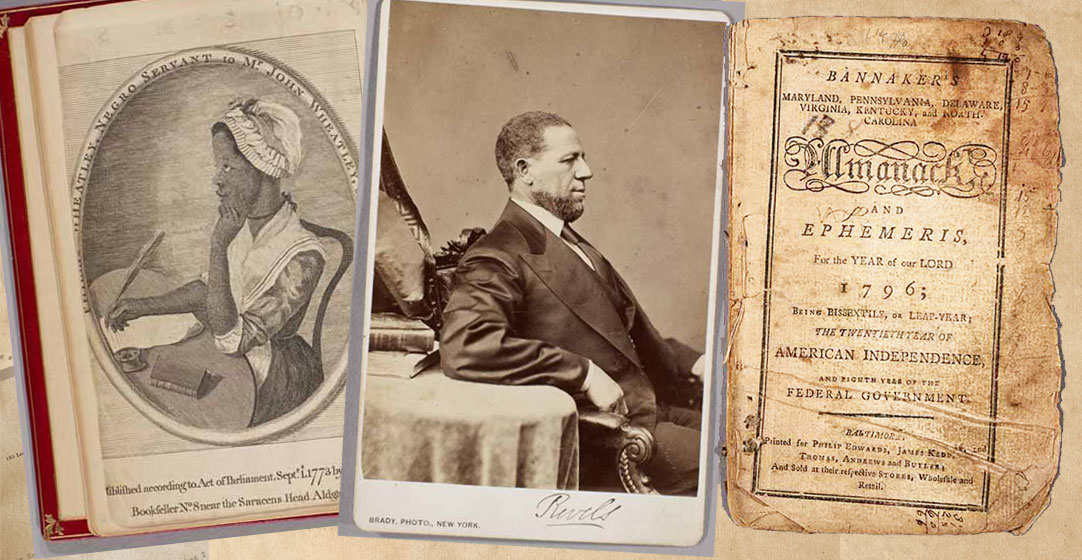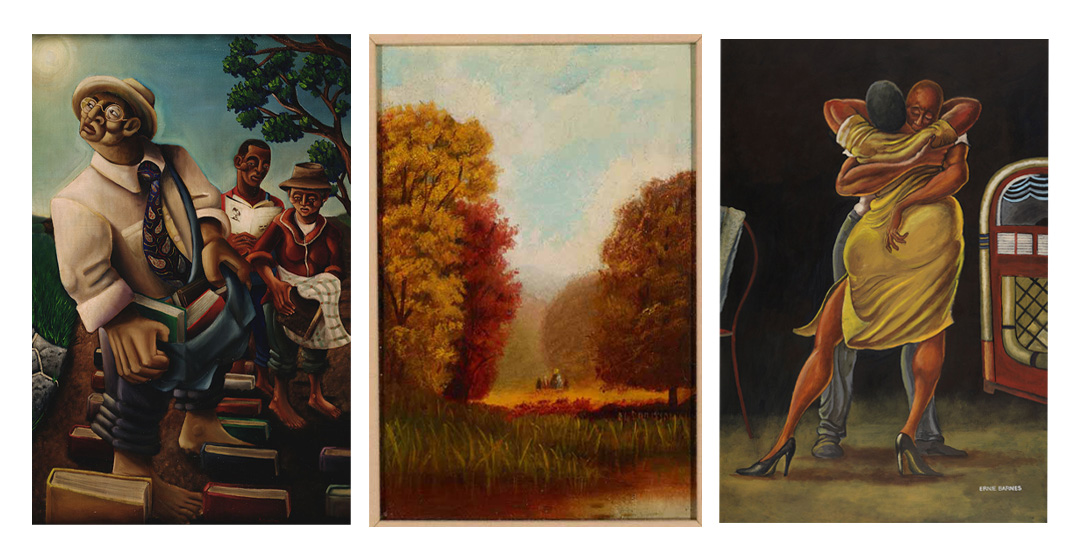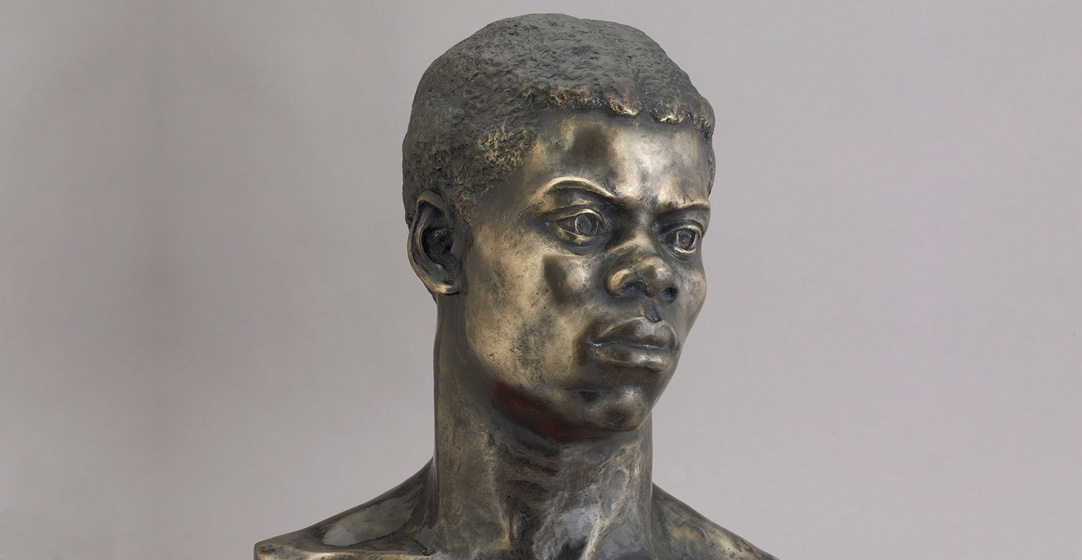History Reclaimed
The Kinsey Collection reveals the triumphs and struggles of African Americans in words and art.
It began with a third-grade homework assignment for Khalil Kinsey: build your family tree. But Khalil remembers that he couldn’t go far back in his family’s lineage. Because of the slave trade, those records don’t exist. For millions of people brought to America as slaves and their descendants, their family lineage was obliterated.
“I can still remember the feeling that I had as a young boy,” Khalil says. “Without having those types of answers and feeling inadequate in comparison with my classmates.”

Private Origins
Khalil is the son of Bernard and Shirley Kinsey. They were married in 1967, 10 years before Khalil was born, and they did not want him to grow up without a sense of his heritage. Together they began filling their home with art and artifacts of Black history to inform and inspire Khalil.
“We never set out to create an exhibition,” Bernard says. “We began this to just try and give Khalil more of what the whole African American story was about. So that he could get the education that spoke to what he wasn’t getting in school.”
At first, Khalil didn’t quite connect with his parents’ modest, yet growing, collection in their Los Angeles home, but gradually he learned how little the outside world knew of Black history. With a renewed hunger, he began to throw himself into his parents’ work in 2009. As time passed, the Kinsey Collection grew and has earned attention from the Los Angeles Times, the California African American Museum and the world.
Today, with Khalil as the chief curator, the Kinseys own and operate the more than 700-piece Kinsey Collection with objects dating from 1595 to the present. The collection has been viewed by millions of people at venues ranging from Disney World to a regional gallery in Plano, Texas, and the Tacoma Art Museum.
Last May, the exhibit appeared at the Greenwood Cultural Center and Gathering Place in Tulsa, Oklahoma, and that show was deliberately timed to commemorate the centennial of the Tulsa Race Massacre that began on May 31, 1921, one of America’s most brutal and nearly forgotten atrocities. During February’s Black History Month this year, a portion of the Kinsey Collection will be on display at The Frederick R. Weisman Art Museum at Pepperdine University in Malibu, California.

Myth of Absence
The 77-year-old Bernard has a saying: “If you understand the African American story, you will see America for the first time with 20/20 vision.”
Anyone who doesn’t understand this, Bernard adds, “has cataracts!” What he means by this, of course, is that for so long, Black people and their history in America have been pushed out of sight. Bernard calls this “the myth of absence.”
As a longtime art collector and curator, Bernard is replacing that myth with a nuanced story of Blacks in America, one that documents the struggles and celebrates the achievements. Bernard knows that if a person — particularly, a Black American — is not privy to the myriad touchstones of their people’s history, then a massive bridge to personal dignity and self-identity is sorely missing.
Bernard lives by many maxims, but one of his most significant is: If you don’t have enough resources, you can’t explore what your heart is saying. What this means is that if you don’t have enough money at your disposal, you can’t invest in yourself, and much will be out of reach.
“I’ve read for two hours a night, every night, for the past 50-plus years,” Bernard says. “There are two things I read about: I read about money and I read about Black folks. You have to figure out what wakes you up everyday. That’s where your purpose is and what you have to explore. But you have to make enough money to get out from under the yoke.”
Bernard retired as a senior vice president at Xerox at 47 in 1991, and Shirley worked as a teacher for years. It would be hard to find someone more rigorous in his thinking than Bernard. But if you asked him, he’d tell you that Shirley is his equal. Central to their bond is a sense of planning and deferred gratification. Over the decades, they saved their money and lived intentionally below their means. The result is financial stability and the opportunity for growth.

Building the Collection
Some of the most notable pieces in their collection include a 1795 Banneker’s Almanac; an original copy of the Dred Scott Decision from 1858; a circa-1773 first-edition book of poems by Phillis Wheatley; landscape paintings by Grafton Tyler Brown; an original copy of the Brown v. Board of Education U.S. Supreme Court decision that led to school desegregation; and rich portraits of Black Americans by painter Ernie Barnes.
“When you come to the show,” Bernard says, “you notice that everything is authentic. This isn’t what the Kinsey family said. It’s what the actual documents said, what the photos said, what the books said. And they’re powerful statements.”
One example is the inaugural address of Vicente Guerrero, a Mexican revolutionary-turned-country president who abolished slavery in Mexico in 1829. Before, the country was home to more enslaved people than free Mexicans, Bernard says.
So when people visit the Kinsey Collection, they can read Guerrero’s address for themselves and see what life was like from his perspective that day in April 1829, and understand what it was like for Blacks prior to his movement — how subjugation can be a thin line away. For Bernard, this is one of many important aspects of history that exemplify how difficult it’s been for Blacks in the Americas for centuries.

Celebrating Achievement
For the Kinsey family, it’s important that the viewers of their exhibit leave with one impression imparted clearly: that the Black American experience, while too often rooted in struggle, is not only about hardship and fighting against institutional dehumanization.
Although slavery and Jim Crow laws crippled generations, that doesn’t mean there weren’t important contributions and advances that shape American life today. There are supremely talented landscape painters; detailed, award-winning sculptors; precise and elevated writers; and much more.
“What we try to speak to,” Khalil says, “is the strength and brilliance and ingenuity of a people; to have that balance. Struggle is meant to be a conduit, it’s meant to be something you pass through to get to the other side.”
– Written by Jake Uitti, last updated by October 2022.
–Top photo is of the Kinsey Collection exhibit. Top photo is courtesy of the Tacoma Arts Museum. All interior photos are from The Kinsey African American Art Collection.







